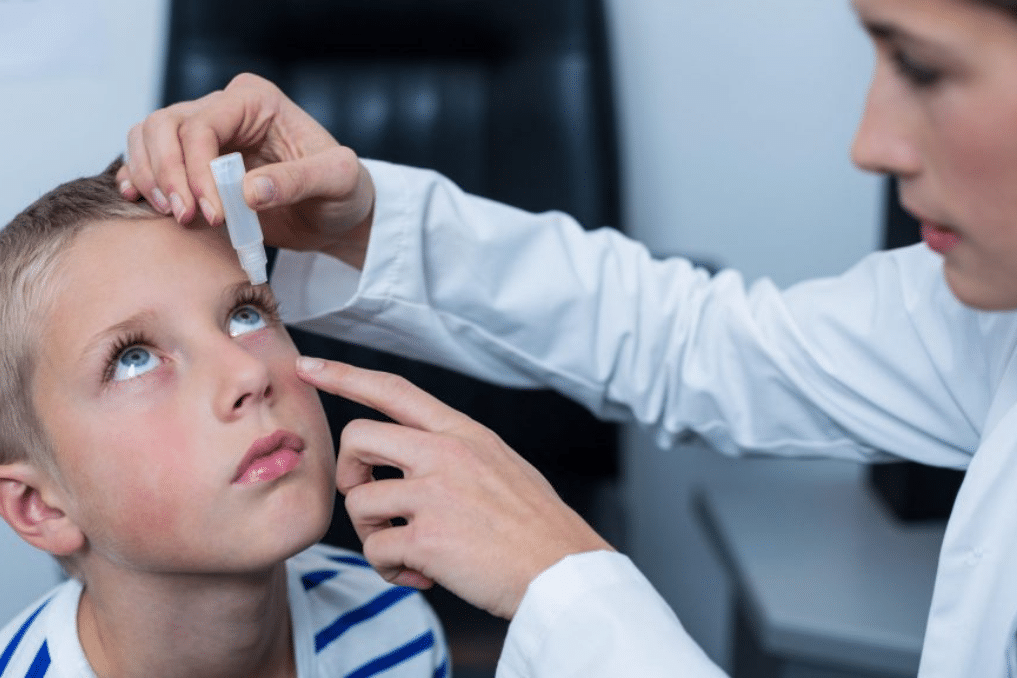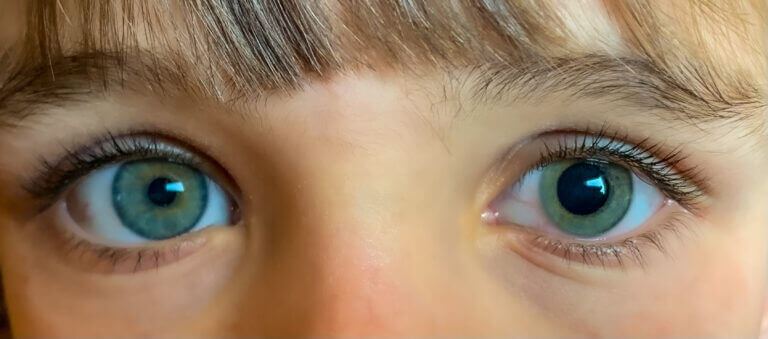
What is Atropine Sulfate?
Atropine Sulfate is commonly used as an ingredient in eye drops. It has multiple uses, including: to enlarge/dilate pupils, and relax the eye muscles, specifically paralysing the ciliary muscles. Eye drops containing Atropine Sulfate are often used prior to specific eye examinations. Additionally, Atropine Sulfate is used to treat Amblyopia, commonly known as lazy eye, and another eye condition; Cycloplegia.
Recent scientific paediatric research has concluded that Atropine Sulfate eye drops, slow down the progression of Myopia in children.
What is Myopia?
Myopia is the formal diagnoses of short-sightedness, which effects the individual’s distance vision. Short-sightedness occurs due to a refractive error, where light entering the eye is focussed by the cornea, but this image will be focusing in front of the retina leaving the image blurry or distorted. It is mostly children that develop Myopia, which later stabilises during adult years.
What are the side effects or adverse effects of Atropine Sulfate drops?
Since this is a recent medical breakthrough, studies analysing the correlation between Atropine eye drops and Myopia in children, are still being further explored.
When these drops are consistently administered over a prolonged period of time, side effects could include: eye irritation, redness, swollen eyelids, sensitivity to light, inflamed skin, or blurred vision. A more serious adverse effect includes: an irregular heartbeat/heart rate.
It is essential to consider that Atropine eye drops have been prescribed by a medical professional, and that most people do not experience the reactions listed above.
If you experience an allergic reaction, you should seek urgent medical attention.
Where does Atropine naturally occur?
Atropine is naturally occurring within the Solanceous plant family, in the Belladonna plant for example, which is also known as ‘deadly nightshade.’ Due to the scientific make up, such as the presence of alkaloid, the plant it consists of hallucinogenic and poisonous properties when it’s consumed without medical regulation. Medical doses only include a concentrated amount of the original plant material.
Additional medical uses of Atropine?
In addition to Ophthalmic use, Atropine is used for a variety of medical purposes. Atropine has different dosage forms, such as an Atropine Sulfate Injection, which is administered by nurses to decrease mucus secretion, in the circumstance of respiratory infections such as Bronchitis. It is also used during surgery to keep the patients heart beat normal. Lastly Atropine is used as an antidote for overdoses of Cholinergic drugs.
What are Sulfates?
Sulfates are derived from petroleum, and naturally occurring in things such as coconuts and palm oil. They are amidst our everyday life, commonly found in personal care and cleaning products. For example, sulfates are what cause soap to be able to foam and lather. Sulfates contain molecules that attract oil and water.
What is the history of Atropine?
The name Atropine was first coined during the 19th century. During the BC time period, it is believed that Cleopatra used Atropine extracts to dilate her pupils, for her personal aesthetic, to look more alluring. Women throughout the centuries continued using Atropine Sulfate extracts from plants to enlarge their pupils, for cosmetic purposes.
Myopia reaching epidemic levels
There is emerging data which contributes the incline of Myopia cases in children, with excessive screen time, due to COVID-19 lockdowns. Additionally genetics play a part.
It’s estimated that 200,000 Australian children have Myopia. Dr Sandra Block, who sits on the World Council of Optometry said Myopia has reached epidemic levels.
Treatment of Myopia, using Atropine Sulfate
In regards to Myopia in children, studies have shown Atropine at a concentrated level, assist in slowing down Myopia progression. Eye drops containing Atropine Sulfate are only available via a doctor’s prescription. Australia’s Therapeutic Goods Administration (TGA) in 2022 approved the use of 0.01% Atropine Sulfate Ophthalmic Solution, for children between four to 14 years old. Medicated doses containing 0.01% of the ingredient are now available with a prescription.
How do I know if my child’s Myopia has stabilised?
Myopia progression can be measured by an Optometrist, during an eye examination.


:max_bytes(150000):strip_icc():format(webp)/belladonna-plant-profile--toxicity-and-identification-5076016-hero-3621916a6c7042a6923fc7f110f38323.jpg)